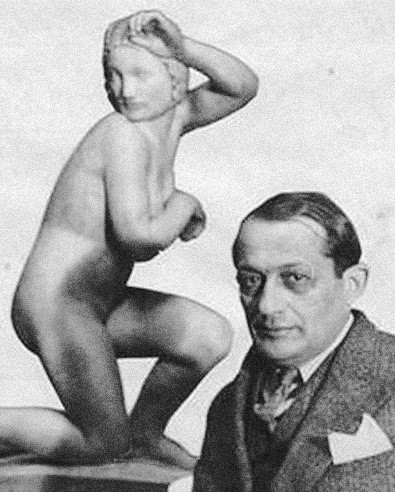Leopold KRETZ
January 5, 2019Jacques LIPCHITZ
January 5, 2019Henryk KUNA
WARSAW 1885 – TORUN (POLAND) 1945
Henryk Kuna was born into an orthodox family. He initially studied to become a rabbi, but later discovered his artistic talent and decided to follow a career as a sculptor. He then studied sculpture in Warsaw, before enrolling in the School of Fine Arts in Krakow. There, he met many artists who became his friends. Many of them joined the group Rytm. Rytm was an artistic movement created in 1921 by several artists, including Henryk Kuna, who hoped to develop a Polish art combining modernity and classicism.
He went to Paris in 1903 and in 1910 in order to learn how to sculpt stone and marble. He lived in Paris from 1911 to the early 1930s. In 1920, Kuna represented Poland at the 12th Venice Biennale alongside other artists such as Teodor Axentowicz. Kuna, who was already a renowned artist, won recognition when a solo exhibition of his work was held in London in 1922. He produced numerous public monuments in Poland and sculpted marble and ebony. In the 1930s, Kuna sculpted the statue of the Polish hero Adam Mickiewicz for the city of Vilnius. This sculpture was destroyed by the Nazis when they invaded Poland in 1939. In 1936, Kuna left Warsaw for Vilnius, where he had an important position in the sculpture department at the School of Fine Arts. After the war, he taught monumental sculpture at the university in Torun.
Stories of Jewish Artists of the School of Paris 1905-1939
FRENCH-ENGLISH
Capitale des arts, le Paris des années 1905-1939 attire les artistes du monde entier. De cette période de foisonnement, un terme est resté, celui d'Ecole de Paris, qui recouvre une grande diversité d'expression artistique. Dans ce brassage dont Montparnasse est le creuset, un groupe se distingue : celui des artistes juifs venus de Russie, de Pologne et d'Europe centrale. Si leurs styles sont variés, un destin commun les rassemble : ils fuient l'antisémitisme de leur pays d'origine. Certains ont connu la célébrité dès les années 1920, tels Soutine, Lipchitz ou Chagall. D'autres n'ont pas eu le temps ou la chance d'y accéder. Près de la moitié a péri dans les camps de concentration nazis.
From 1905 to 1939, Paris attracted artists from all over the globe as the capital of the art world. This period of artistic proliferation became known as the School of Paris, and includes a great diversity of artistic expression. Within the teeming art world centred on Montparnasse, one group set itself apart: Jewish artists from Russia, Poland, and Central Europe. Although their styles were diverse, they shared the common fate of fleeing anti-Semitic persecutions in their home countries. Some became famous in the 1920s, such as Soutine, Lipchitz, and Chagall, while others did not have the time or the luck to gain renown. Nearly half of these artists died in Nazi concentration camps.





